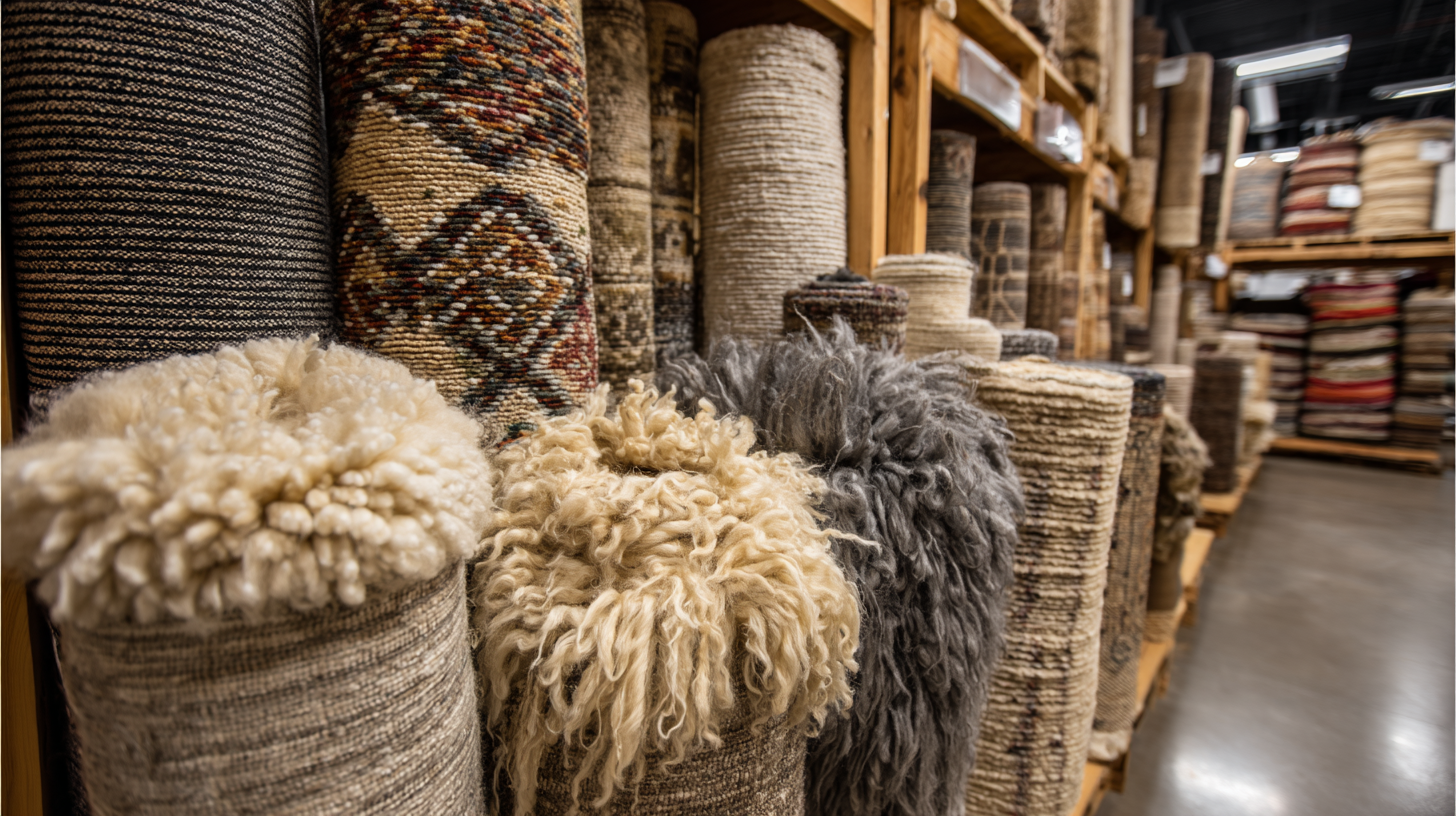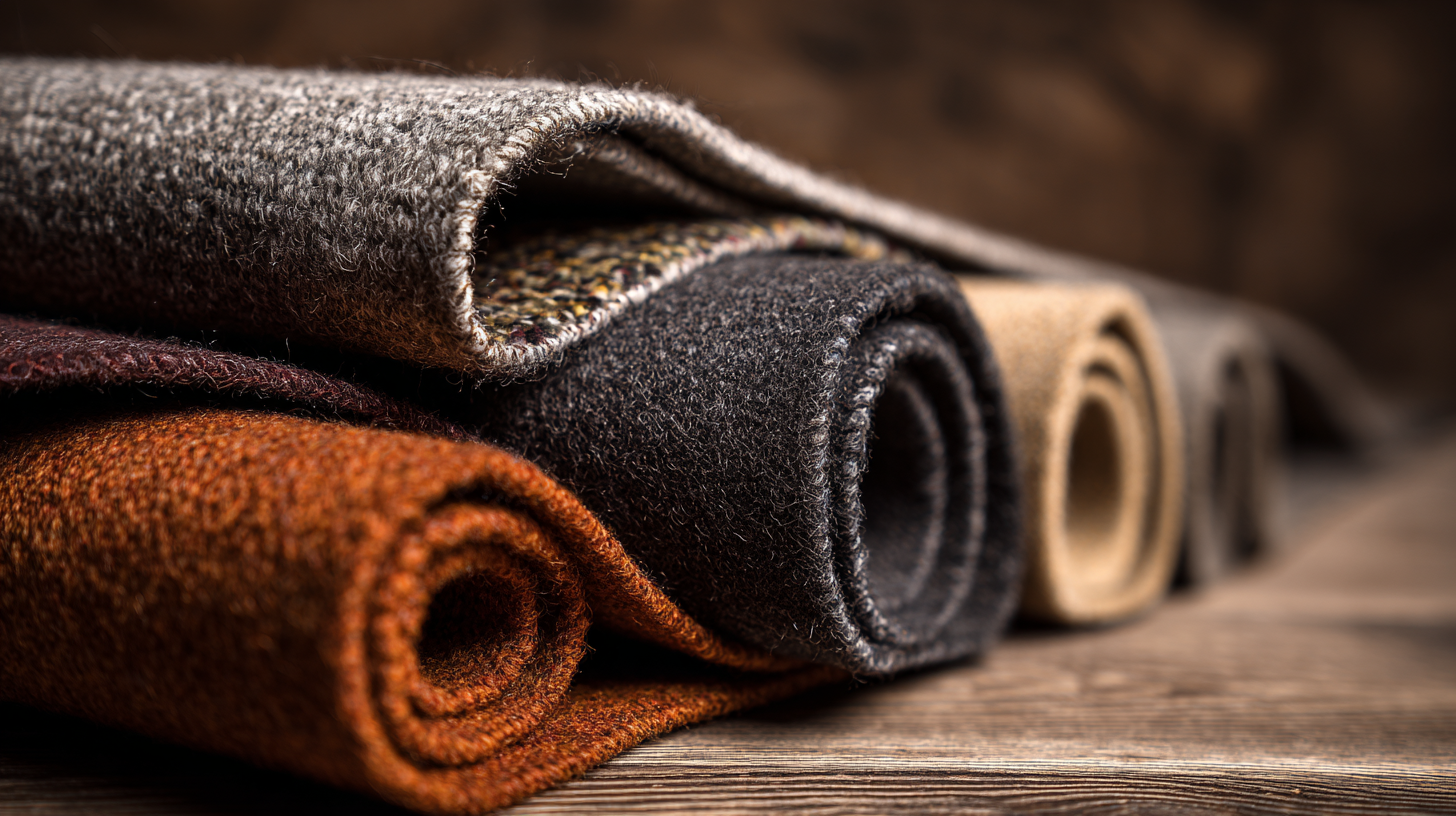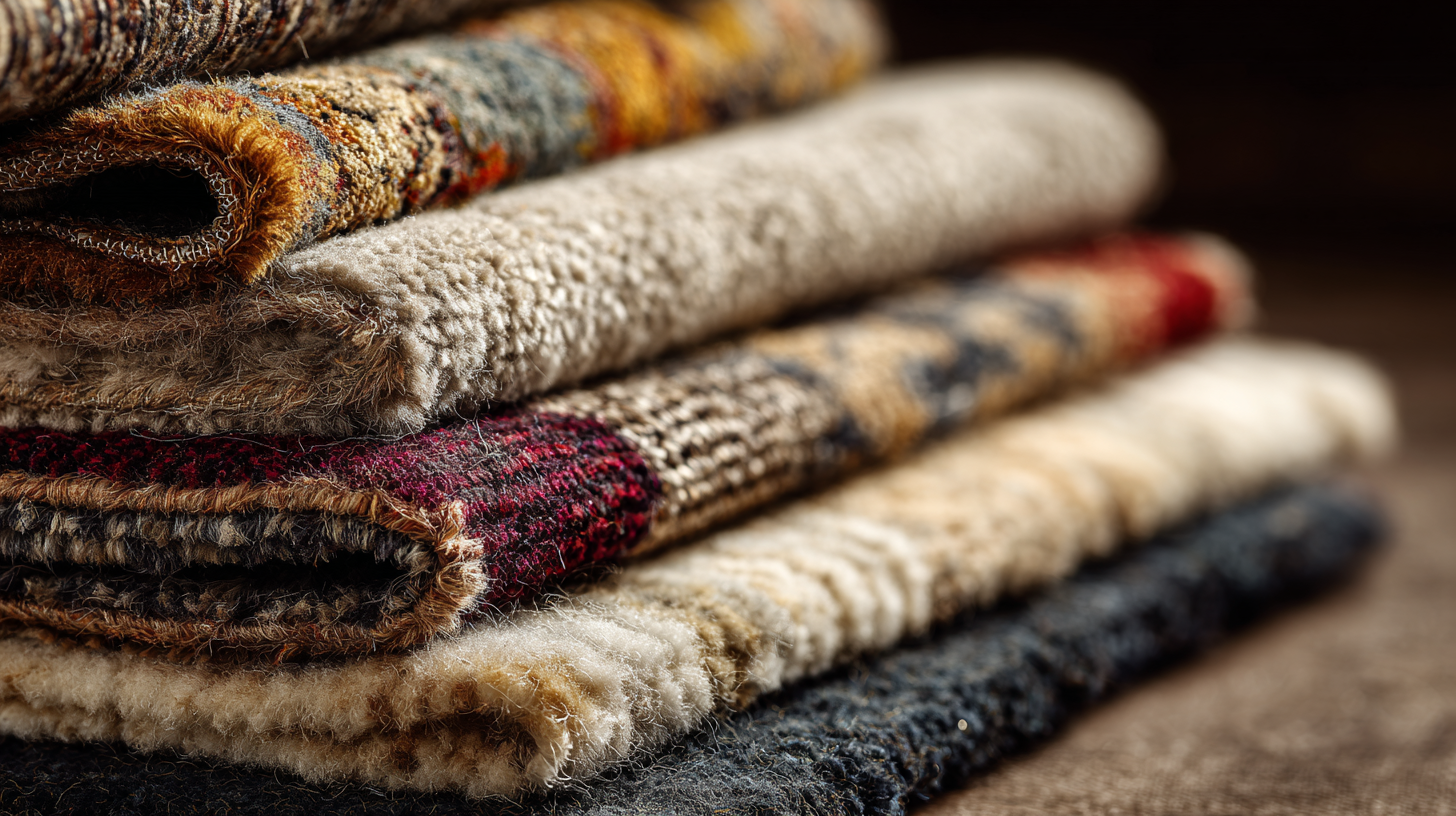
-
Home
-
About Us
-
Products
-
News
-
Blog
-
Contact Us
Leave Your Message

When selecting the perfect rug wool for your home or project, it's crucial to understand the industry standards that govern quality and durability. The global carpet and rug market is projected to reach a value of over $75 billion by 2027, with natural fibers, particularly wool, accounting for a significant share due to their unique properties. Wool rugs are prized for their resilience, aesthetic appeal, and ability to regulate temperature and moisture, making them a sustainable choice for eco-conscious consumers. However, not all wool is created equal—insightful studies by the International Carpet and Textile Institute reveal that factors such as fiber length, twist, and dyeing methods can dramatically influence the performance and longevity of the rug. By following these essential tips for choosing the best rug wool, you can ensure that your investment meets both your aesthetic expectations and practical needs.

When it comes to selecting the best wool rugs, understanding the various types of wool available is crucial for ensuring quality and durability. The primary kinds of wool are New Zealand wool, Merino wool, and Tibetan wool, each with unique characteristics that impact their performance as area rugs. According to a report from the Woolmark Company, New Zealand wool is known for its resilience and natural elasticity, making it an excellent choice for high-traffic areas. Its fibers can withstand compression, ensuring a lasting appearance and comfort.
Merino wool, on the other hand, is celebrated for its softness and fine texture. It is sourced from Merino sheep, predominantly raised in Australia and New Zealand, and is often recommended for luxurious rugs that prioritize comfort. The International Wool Textile Organisation indicates that Merino wool has excellent moisture-wicking properties, which helps in regulating temperature and reducing odor, making it ideal for warmer environments. Lastly, Tibetan wool offers a unique aesthetic with its hand-spun texture, but its durability can vary based on the weaving technique employed. Understanding these distinctions can guide consumers in selecting a wool rug that not only fits their aesthetic needs but also holds up against wear over time.

When selecting the best wool rug, evaluating fiber density is a crucial factor that can significantly impact the overall quality and durability of the rug. Higher fiber density often indicates a more tightly woven construction, leading to better resilience and comfort underfoot. This attribute is especially vital for households that experience high foot traffic, as it ensures the rug maintains its appearance and texture over time. Additionally, a dense fiber pile tends to offer enhanced stain resistance, making it easier to clean and maintain—an essential consideration for those prone to spills.
While experimenting with various design aspects like pile height, size, and shape is important, understanding fiber density provides a solid foundation for your choice. A rug with the right fiber density not only complements your aesthetic preferences but also delivers lasting performance and satisfaction, regardless of whether it’s placed in a living room or a bustling hallway. Therefore, before making a purchase, take the time to assess the rug’s fiber density, as it plays a crucial role in ensuring the perfect mix of style and practicality.
This bar chart illustrates the fiber density of different rug wool types, highlighting the importance of density in determining quality and durability when selecting the perfect rug.
When selecting the best wool rugs, understanding the role of dyeing techniques is crucial to ensuring both quality and aesthetic appeal. The dyeing process not only influences the color vibrancy and saturation of the wool but also affects the overall durability and longevity of the rug. According to a report by the International Wool Textile Organisation, wool dyed using high-quality, sustainable methods tends to retain its rich colors for longer periods, highlighting the importance of choosing rugs that are dyed with natural or eco-friendly substances.
One essential tip for consumers is to inquire about the dyeing methods used in the rugs they are considering. Opt for rugs dyed with methods that minimize environmental impact, such as low-impact or cold dyeing techniques, which can significantly enhance the rug's quality while promoting sustainability. Additionally, look for certifications indicating adherence to industry standards in dyeing processes, as this often signifies higher craftsmanship and durability.
Another key consideration is color fastness. High-quality wool rugs dyed with appropriate techniques should resist fading when exposed to sunlight. According to the Woolmark Company, rugs that have undergone proper dyeing processes can exhibit color fastness ratings of 4-5 on the grey scale, ensuring that the rug maintains its original beauty through years of use. This emphasis on dyeing not only affects the visual appeal but also speaks to the rug’s integrity and performance over time.
When selecting the best wool rug, understanding the environmental standards of wool production is paramount. The industry has witnessed a significant shift towards sustainable practices, as evidenced by a 2021 report from the International Wool Textile Organisation (IWTO), which highlights that over 80% of leading wool producers are adopting sustainable farming methods. This aligns with the increasing consumer demand for products that not only look good but also reflect eco-friendly values.
To ensure that your wool rug meets high environmental standards, consider sourcing wool certified by organizations like the Responsible Wool Standard (RWS). This certification ensures that the wool comes from farms that uphold animal welfare and land management practices. Additionally, look for brands that engage in transparent supply chain practices, as over 60% of consumers prefer products with a clear sustainability narrative.
Another key factor is the dyeing process. Opt for rugs that use low-impact dyes, which reduce water pollution and are safer for the environment. According to the Global Organic Textile Standard (GOTS), rugs produced with organic dyes can significantly lower the ecological footprint. Prioritizing these practices not only contributes to a healthier planet but also enhances the quality and longevity of your rug investment.
| Criteria | Sustainable Practices | Environmental Impact | Wool Certification |
|---|---|---|---|
| Animal Welfare | Free-range farming practices | Low animal stress levels | Woolmark Certificate |
| Production Process | Use of biodegradable cleaning agents | Minimized water pollution | OEKO-TEX Standard 100 |
| Sourcing Materials | Local sourcing to reduce carbon footprint | Supports local economies | Responsible Wool Standard |
| Waste Management | Recycling of production waste | Reduced landfill contribution | Global Recycle Standard |
| Energy Use | Utilization of renewable energy sources | Lower carbon emissions | Energy Star Certification |
When selecting a wool rug, understanding industry certifications is crucial. Certifications such as SCS Indoor Advantage, Indoor Advantage Gold, and FloorScore® play a significant role in ensuring that the wool used meets health and environmental standards. According to various industry reports, rugs that are certified under these standards are less likely to contribute to indoor air quality problems, which can be a concern for sensitive individuals. For instance, SCS Indoor Advantage ensures that products have been tested for volatile organic compounds (VOCs) and other harmful emissions, promoting healthier indoor environments.

Moreover, discerning customers are increasingly prioritizing sustainability and ethical sourcing in their purchases. Reports indicate that consumers are more confident in products that carry recognized certifications, particularly in the halal food and beverage sectors. This trend can similarly be seen in the flooring industry; wool rugs that are certified not only guarantee quality and safety but also reflect a commitment to responsible manufacturing practices. By selecting products that adhere to these recognized standards, customers can make informed choices that contribute to both their health and environmental stewardship.